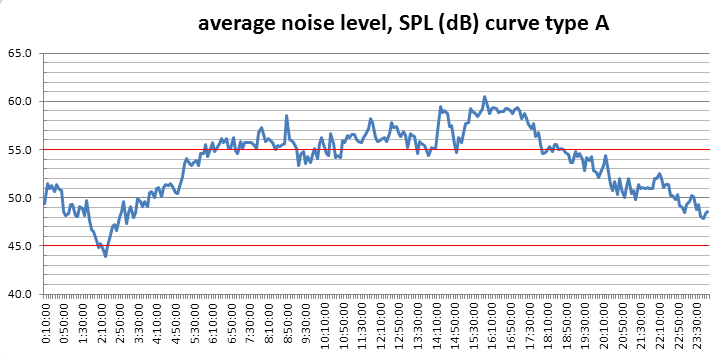Night Noise Guidelines
The facts
I've been wondering for a while how serious is the stress level produced by a very noisy environment, especially during the night when we are supposed to rest and sleep.
Clearly this problem has been studied in the past, and I did find an excellent link to an italian website regarding public health. The website is called "Epicentro", and it is actually an official website for the italian "National Centre for Epidemiology, Surveillance and Health Promotion" focusing on Epidemiology for Public Health.
Note that this is a fork of the ISS, i.e. "Istituto Spuperiore Sanita", the highest italian authority regarding public health guidelines.This gives to the topic quite a serious tone, isn't it?
Indeed this is a serious matter, so serious that even the European Communty has produced a funded study back in 2003 to identify the levels of night noise that can produce bad effects on human beings.
In this link http://www.epicentro.iss.it/temi/ambiente/rumoreNotturno.asp (sorry italian only..) it is well explained how our body can be severely affected by the levels of noise we are exposed during the night hours. It is a very well written webpage, crystal clear. I suggest to read this document, I made a pdf using google translator here: NightNoiseISS_EN.pdf
This document actually is a summary of the official european study that I mentioned before. It does refer to the EU document at the bottom. Here is my local copy: NightNoiseGudelinesForEurope.pdf.
The summary made by Epicentro(ISS) of the European study is crystal clear when it does list the range of noise level and its conseguences on people health:
- up to 30 decibels: not observed substantial biological effects
- between 30 and 40 decibels increase the body's movements, arousals, sleep disturbance,excitement. The effects seem modest, but it is not inconceivable that vulnerable groups are affected to a greater extent
- between 40 and 55 decibels: there is a marked increase in adverse effects, the majority ofpeople exposed is affected and suitable to live with the noise. Vulnerable groups at this level of exposure, are severely affected
-
above 55 decibels: the situation is considered dangerous in terms of public health. Adverse effects are frequent and the cardiovascular system begins to be under stress. Cardiovascular stress is the dominant effect.
Also the final recommendation is very simple too:
For primary prevention of sub-clinical side effects of night-time noise, the report recommends that the population should not be exposed to levels that exceed 30 decibels during the night, which is considered the maximum threshold to protect the citizens, including the most vulnerable groups.
All nations are encouraged to reduce gradually as effectively as possible, the proportion of the population exposed to noise levels that exceed 55 and, then, the 40 decibels. This European project provides the basis for updating the WHO guidelines for night noise, which date back to 2000.
Current guidelines consider as maximum noise level of 45 decibels bearable, but this figure is based on different indicators and assessed on the basis of scientific knowledge then available. In the light of new evidence, the project suggests a safety limit lower.
The good, the bad, and the ugly
So why am I so happy to have found this documentation from aug. 2003? everything seems to obvious to all of us, right? Well .. yes ... sort of.
It is good that there is public and official evidence that night noise levels are important. I think that modern society, and especially local government of small towns like Cremona, should keep this in strong cosideration when decisions are made.
The bad is that even when there is evidence it is very difficult for citizen to defend their rights. Too many interests, way too many excuses and of course ... the ubiquitus typical laziness: it's a problem only for few hundreds people living so close to A21 .. so why bother.
The ugly part is that all the measures I've done so far clearly shows that we are living on the edge of the "red zone". Nothing different from what I expected to see. The fact that you have to keep you windows closed day&night it's just a hint of what an SPL meter will tell you.
Here it is an example of 3 days of measures at the end of july, i.e. in a low season regarding traffic on A21. Note that the data have already been filtered (median filter on 5min span) and averaged over the 3 consecutives days, so this is actually a decent statistical sample, cutting out all the peaks and outliners. You can find all the data in this excel spreadsheet: NightNoiseGuidelines.xls

Can you see the "ugly" now?
The typical levels of noise are ALWAYS well above italian/european recomendations. And I can't even imagine what this plot will be once I have collected more and more data.
On top of that .. local government has announced the intention to build another road called "strada sud" that will increase the road traffic on this area. You can read the official announcement here: http://www.comune.cremona.it/PostCE-display-ceid-3967.phtml
... Sometimes I just ask myself if blindness and low cultural level will ever have a limitation for local governement and (sadly) it seems to me that my loved hometown is beating all the records!
